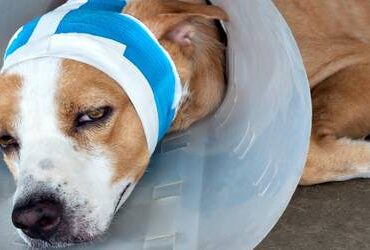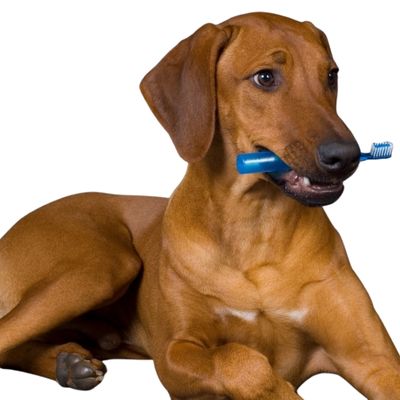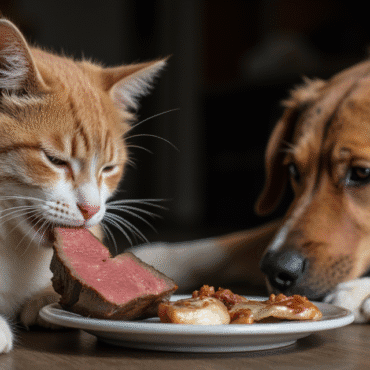
Post-Surgery – Helping Our Pets Through It
Hi everyone and welcome to this episode of Val Talk’s Pets. In this episode I thought we would explore what to do after our pet has had surgery or a […]
 play_arrow
play_arrow“Human” Foods For Pets Val Cairney

 play_arrow
play_arrowPreventing Pet Bad Breath Val Cairney

Hi everyone and thank you for joining me on this episode of Val Talk’s Pets. In this episode I thought I would take a look at a subject that many pet parents deal with on a day-to-day basis and that is…bad breath, not theirs but their pets’. I hear on a regular basis, “my dog’s breath is so bad, or my cat has pretty bad breath”, what can I do?
Well pet bad breath is actually pretty common, but it is a sign of a deeper issue and I think we should delve deeper into this common affliction because there are quite a few misconceptions. So, here we go, bad breath it is!
Let’s focus on dogs for the moment because truthfully, I hear about bad dog breath more than cats. According to labradortraininghq.com one of the first things to look at are medical issues that could be causing the bad breath. Labradortrainigheadquarter.com goes on to state that “Bad breath can be a symptom of some metabolic diseases and disorders. A buildup of toxins caused by such diseases can lead to extremely foul-smelling breath. So, kidney disease causes sour, chemical smelling breath in dogs, and diabetes can also cause bad breath, but it may have some sweet or fruity notes, too.
Liver disease is another offender, which is also marked by yellowish gums or eyes.” If the bad breath has come on suddenly or is marked by these specifics, it would be prudent to have a vet visit to see what is going on. In this case the bad breath is a warning.
Another thing that can cause bad breath is when the sinuses or nasal passages are inflamed. This means the dog is not breathing properly and can be drooling as they are essentially mouth breathing or struggling to breathe. A respiratory system that isn’t working properly can cause bad breath. Brachycephalic dogs will often struggle with this.
So, the culprits preliminarily are, liver disease, kidney disease, and sinus inflammation. The other culprit is the big one, which is oral or gum disease, the biggest being periodontal disease. According to foreverpets.com, the 4 stages of periodontal disease begin with tartar build up which reddens the gums. Stage 2 the gums will swell and bone loss begins. In stage 3 the bone loss continues and in stage 4 severe bone loss can lead to bleeding gums and loss of teeth. So, periodontal disease is pretty serious and it is up to us as pet parents to manage our pet’s oral health. So, what can we do?

If you have acquired a new puppy, one of the best things you can do is begin a tooth brushing regimen that will get the pup used to having their teeth brushed. Because a puppy has baby teeth it is recommended that a finger brush be used or a dental wipe. The finger brush will have soft bristles and you can get the pup used to having your finger in their mouth with gentle rubbing on their teeth and gums. No doggy toothpaste or anything is needed. This is all to get the pup used to have a finger moving on their teeth in preparation for a toothbrush later on. The dental wipe will be the same as you use the cloth around your finger and rub the pup’s teeth and gums. Do however check the instructions on a dental wipe to make sure that the age of your pup is within the usage parameters on the package.
Okay, so once we have a dog that now has their full set of adult teeth, hopefully all that prep means that you can brush your dog’s teeth no problem and can begin using a doggy toothpaste. Remember, never use human toothpaste with dogs. Many human toothpastes have Xylitol in them. And if you have been a part of my other episodes, you’ll know how many times I have been very clear that Xylitol is very toxic for dogs and that it is being marketed as sugar birch, so don’t be fooled. So, using a doggy toothbrush or continue with your finger brush, brushing your dog’s teeth particularly concentrating on the back molars, you can manage your dog’s oral health quite well.
Now, I know what many of you are saying, “there is no way I can get my dog to let me brush his or her teeth”. And that is an absolute scenario. Often, we adopt dogs who are adults, so no one has done any puppy prep with them so all of a sudden expecting them to let us get in their mouths with a brush or our finger is a no go. And even if you were super diligent with puppy prep, there is no guarantee that your dog with become an adult and be a lazy daisy as you brush away inside their mouth. So, for this reason there are alternatives. Let’s go through some of the products we can use that are not based on brushing.
Water additives are poured into your pet’s water, so this also works well if the cat and dog share the same water bowl. A water additive will add oral health care properties like green tea extract and citric acid to coat the pet’s teeth to help prevent plaque from building. Some people have really good luck with this and some not so much. Water additives will always say that the product is tasteless, but I have had people say, that as soon as they added this product to the pet’s water, they wouldn’t drink it. So, there will be a bit of an experiment there. Also, if you change the water quite a bit, you are throwing out the additive and having to add another capful each time. Also, if you use a moving water fountain, this will not work as the product will end up being filtered out.
Another product is oral sprays. These are designed to spray your pet’s teeth with the product so again, the agents are on the teeth left to break down forming plaque. These sprays do not have a splashy nature to them, so your dog or cat is not scared by the sound of a spray. Again, this one can be a challenge. I know that it doesn’t take any sound for Tundra to know I have some kind of spray in my hand. Dental wipes as I mentioned can be quite easy to use if your pet is okay with you wiping inside their mouth. There are also some food additives that you can use. These are powders that go in the food. They leave a residue behind on the teeth that again breakdown and prevent plaque. In this area of products that you can use to get some kind of enzymatic property on to your pet’s teeth, the one I like the most and find the easiest to use are the gels. The oral gels allow you to squirt a little gel into each side of your pet’s mouth without having to brush. The pet will salivate and lick and this will move the product around the mouth, coating the teeth with the enzymatic property of the gel. If you are consistent with this, the results are quite amazing. And, if there is a buildup of plaque already, the gel will start to break this down and loosen the plaque so that when the pet chews its kibble or a hard toy or chew, the plaque will begin to break off. The gels are a really good alternative for pets that just will not let you brush their teeth.

Now, let’s talk a bit about teeth cleaning treats. So, this is a bit of a tricky one because there are certain dental sticks on the market that are really pushed through advertising that they remove plaque and freshen breath. But the thing to ask is, how long does it take the dog to eat the stick? I find that often dogs will take a dental stick and just chomp, chomp and it’s done. Dental sticks will often have sodium tripolyphosphate as an active ingredient so there is some form of dental property in them. But if the dog chews the stick so fast the chances of getting this property to stay on the teeth may be compromised. Now, some dental chews will be chewier, which means the dog’s tooth will sink into the chew and have a better chance of getting the active ingredient to stay on the tooth and reach down into the gum. The other thing to look for in a dental chew is whether the product has been approved by the Veterinary Oral Health Council. This means that the standards and the protocols have been met.
So, different companies have ventured into the dental chew area and the one that most people are familiar with are Greenies. I have spoken with people who really feel that their dog’s teeth, and cats for that matter, are better for having been given a Greenie dental chew on a regular basis.
Okay, so we have some products that can help us, but here is the thing. I have spoken with pet parents that say they have tried everything, and nothing works. Additives, gels, treats, you name it, they have used it and no matter what their dog has teeth with plaque and their breath stinks. Unfortunately, when someone asks me specifically what they can do to deal with their dog’s bad breath, the answer I always give is that their dog will need to get its teeth cleaned. The honest truth is, if your dog has nasty bad breath, bad enough that you just don’t want them anywhere near you, no number of treats or additives is really going to do anything. This level of bad breath means there is periodontal disease and the plaque more than likely has probably formed around rotting food at the back of the mouth and all this is contributing to the odour. And here is another thing, sometimes no matter what you do, certain dogs just create plaque right before your eyes. I get Tundra’s teeth cleaned about every 4 months or so, but almost immediately I can see this grey gummy stuff forming on his back teeth which will eventually harden and become plaque. So, I try to brush this off, but he hates when I do and I’m not very good at it. The gel works well but he knows when I’m coming with it so again, it hates that.

Now, veterinary teeth cleaning is without a doubt very expensive. If you live somewhere where you can get your dog or cat’s teeth cleaned under $800.00, I can tell you, you are doing well. Most people in my area are being given estimates of $1200.00 or $1800.00. So, for this reason, I manage Tundra’s teeth with Kissable K9 Care, who do hand scaling removing plaque and tartar with the pet being fully awake. And this can be a real issue for senior pets. Senior pets are often the ones that have terrible breath for obvious reasons and the pet parent is, and rightly so, concerned about having the pet put under anesthesia. In this case a service that will clean and descale a pet’s teeth without putting them under can be a real option and quite a bit less expensive. However, if the pet is in need of some serious dental work meaning the bone loss has created the need for removal of teeth or the gum disease has really invaded below the gum line, then the best thing to do is head to the vet for a full oral exam and cleaning and a thorough conversation with the vet about concerns with a senior pet. If you are interested in a service like Kissable K9 Care, I have a great interview with founder Jill Thompson that you can access to learn all about her service.
In the meantime, our dogs and cats want to be up close and personal. And we want to do the same, but that bad breath can be a real deterrent. So, by all means look into the different products out there or a service for teeth cleaning and do your homework as always, because as I say, knowing is caring.

Tagged as: pet dental hygiene, kissable k9 care, pet bad breath, dental chews, greenies.
Hi everyone, and welcome to Val Talk’s Pets, the forum for pet parents and enthusiasts alike. So, I have been working in the pet industry now for almost 10 years and, on a daily basis, I handle a lot of issues and questions arising from pet parents. I am not a veterinarian but I do have certifications in Canine, Feline, Small Animal, Fish and Herptile and Avian Health and Nutrition from the University of California, Davis Extension, the Vet College.

Val Cairney October 14, 2022
Hi everyone and welcome to this episode of Val Talk’s Pets. In this episode I thought we would explore what to do after our pet has had surgery or a […]

Val Cairney October 31, 2025

Val Cairney August 1, 2025
For the price of a coffee, or more if you are feeling generous, you can help keep this podcast going & growing. Please visit my ko-fi page to make a donation. Thanks!
all rights reserved - Val Talks Pets - 2024